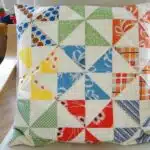Creating a stunning living room arrangement is a task that requires careful consideration of various design elements. As an interior design expert, I understand the importance of creating a space that not only looks beautiful but also serves its functional purpose. The living room is a space where families gather, entertain guests, and spend quality time together. Therefore, it’s essential to create an inviting and comfortable atmosphere that reflects the homeowner’s personality and style.
In this article, I will share some designer tips for creating a stunning living room arrangement. From selecting the right furniture pieces to choosing the perfect color scheme, these tips will help you transform your living room into a welcoming and stylish space. Whether you’re starting from scratch or looking to refresh your current living room design, these tips will guide you in making the most of your space while serving others with comfort and beauty.
Assessing The Space
A living room is the heart of any home, and it’s important to make the most of this space. Before diving into decorating, it’s crucial to assess the area you have at hand. This means taking measurements and assessing the space in terms of size, shape, and overall layout. By doing so, you’ll be able to maximize flow and optimize layout.
One thing to consider when assessing your living room is traffic. How do people typically move through this space? Are there any obstacles or areas that need improvement? It’s important to take these factors into account when planning your furniture arrangement. By optimizing traffic flow, you can create a more functional living environment for yourself and your guests.
Another key aspect to consider is natural light. Take note of where windows are placed and how much light they bring in during different times of day. This will help you choose furniture pieces that won’t impede the flow of natural light throughout your living room. Additionally, incorporating mirrors strategically can help reflect light and make the space feel larger and brighter.
Choosing The Right Furniture Pieces
When it comes to designing a stunning living room arrangement, choosing the right furniture pieces is crucial. Not only do they serve as functional elements in the space, but they also set the tone and style of the room. Mixing materials is a great way to create interest and dimension in your living room. For example, pairing a leather sofa with an upholstered accent chair or adding a wood coffee table with metal legs can add texture and visual appeal.
Finding inspiration for your furniture selection can be overwhelming, but there are many resources available to help. Interior design magazines and websites are great places to start, as they often feature professionally styled rooms that can spark ideas for your own space. Another option is to visit furniture showrooms or home decor stores to see different styles and pieces in person. Don’t be afraid to take pictures or notes of what you like so you can refer back to them later.
When selecting furniture pieces, it’s important to consider proportion and scale. Too many large items in a small space can make it feel cramped, while too many small items in a large space can make it feel empty. To ensure everything fits together harmoniously, take accurate measurements of your living room and create a floor plan before making any purchases. This will help you visualize how each piece will fit into the space and prevent any costly mistakes.
As we move on to measuring for proportions, keep in mind that taking the time to carefully select furniture pieces that complement each other not only creates a visually pleasing living room arrangement but also adds functionality for everyday use.
Measuring For Proportions
Satire: Measuring for Proportions – Finding the Right Balance
Ah, measuring! That dreaded task that sends shivers down the spine of many designers. But fear not, dear reader, for exact measurements are crucial to achieving a visually pleasing living room arrangement. Without proper measurement, you risk throwing off the balance and harmony of your space.
To begin, measure the length and width of your living room. This will help you determine the size and placement of your furniture pieces. A common mistake is selecting furniture that is too big or too small for the room. By measuring first, you can ensure that everything fits effortlessly into place.
Next, consider the height of your ceilings. High ceilings call for taller furniture pieces while low ceilings require shorter ones to create visual harmony. Use this handy table as a guide:
| Ceiling Height | Recommended Furniture Height |
|---|---|
| 8 ft or lower | Low-profile furniture |
| 9-10 ft | Medium-height furniture |
| Over 10 ft | Tall furniture |
Creating Visual Harmony
Measuring for proportions is essential to creating an aesthetically pleasing living room arrangement. But it’s not just about getting the right measurements; it’s about finding the right balance between all elements in your space. Think about color, texture, and shape when selecting furniture pieces and decor items.
For instance, if you have a bold-colored sofa, balance it out with neutral accent chairs or pillows to prevent overwhelming the space. If you have a lot of sharp angles in your furniture pieces (e.g., square coffee table), add some round decor items (e.g., circular rug) to soften up the space.
By considering all aspects of design – from measurement to color selection – you can achieve a harmonious living room arrangement that impresses both yourself and your guests.
Transition: Now that we’ve covered how to measure for proportions and create visual harmony, it’s time to move on to selecting colors and patterns.
Selecting Colors And Patterns
Color coordination and pattern mixing are important elements to consider when designing your living room. The right combination can create a cohesive and visually appealing space that reflects your personal style. When selecting colors, it’s important to choose a palette that complements the size and shape of your room. Lighter shades can make a smaller space feel more open, while darker hues can add warmth and depth to a larger area.
In addition to color selection, pattern mixing is another way to add interest and texture to your living room. However, it’s important to balance bold patterns with simpler ones, as too much visual clutter can be overwhelming. A good rule of thumb is to select one large print as the focal point, such as an accent wall or statement piece of furniture, and then layer in smaller patterns through accessories like throw pillows or curtains.
When coordinating colors and mixing patterns, it’s also important to consider the overall style of your living room. If you’re going for a modern look, opt for crisp lines and geometric prints in neutral tones with pops of bright color. For a more traditional feel, incorporate classic patterns like stripes or florals in rich jewel tones. Ultimately, the key is to find a balance between colors and patterns that feels cohesive without being too matchy-matchy.
Moving forward into creating a focal point for your living room design, there are several ways you can draw attention to specific areas of the space.
Creating A Focal Point
One of the most important aspects of designing a stunning living room arrangement is creating a focal point. The focal point is the statement piece that draws attention and captures the eye of anyone entering the room. It can be a large piece of artwork, a unique furniture item, or even an accent wall. Whatever it may be, it should be something that stands out and sets the tone for the rest of the design.
When selecting a focal point, it’s important to consider the overall style and color scheme of the room. For example, if you have a neutral color palette, you may want to choose a bold statement piece that adds contrast and visual interest to the space. On the other hand, if your living room is already filled with vibrant colors and patterns, you may want to opt for a more subdued focal point that complements rather than competes with the existing decor.
Creating an accent wall is another great way to establish a focal point in your living room. This can be achieved by painting one wall in a bold color or pattern, or by adding wallpaper or textured panels to create visual interest. An accent wall not only adds depth and dimension to your living space but also serves as an excellent backdrop for showcasing your favorite artwork or furniture pieces. With a well-designed focal point in place, your living room arrangement will instantly become more inviting and visually appealing.
Moving on from creating your stunning focal point is incorporating textures into your design. By mixing different textures such as velvet fabrics, woven rugs and knitted throw pillows; you’ll add depth and warmth into your living space while providing additional comfort for all who gather there.
Incorporating Textures
When choosing fabrics for living rooms, it is important to consider the texture and color to create visual interest. Accent pillows are a great way to add texture, color, and pattern to a space. Rugs are essential for adding warmth to a room and incorporating texture. Wall hangings can be used to introduce a variety of textures, colors, and patterns. Mixing colors and patterns can create a lively and dynamic living room. Layering items with different textures and colors can create depth and dimension in a space.
Choosing Fabrics
When it comes to creating a stunning living room arrangement, incorporating textures is key. One of the best ways to do this is by choosing fabrics that add depth and character to the space. Mixing patterns and coordinating colors can make for a visually appealing design scheme.
To start, consider the overall color palette of your living room. Choose fabrics that complement or contrast with the existing colors in the space. Neutral tones like beige, gray, and white are versatile options that can work well with any color scheme. If you want to add some pops of color, choose fabrics in shades that coordinate with other elements in the room such as artwork or throw pillows.
When mixing patterns, it’s important to keep in mind balance and scale. Use larger prints on larger furniture pieces like sofas and armchairs, while smaller prints can be used on accent pieces like throw pillows or curtains. To avoid overwhelming the space, limit yourself to no more than three patterns per room. By following these tips for choosing fabrics, you can create a cohesive and visually appealing living room arrangement that will impress anyone who enters your home.
Adding Accent Pillows
Incorporating textures is one of the best ways to create a stunning living room arrangement. A great way to achieve this is by adding accent pillows. Accent pillows are not only functional but also add depth and character to the space. By choosing the right materials, layering textures, and mixing patterns, you can create a cohesive and visually appealing design scheme.
When it comes to adding accent pillows, color coordination is key. Choose colors that complement or contrast with the existing colors in the space. If your living room has a neutral color palette, consider adding accent pillows in shades that coordinate with other elements in the room such as artwork or curtains. Mixing patterns can add visual interest to your living room arrangement, but be mindful of balance and scale. Use larger prints on larger furniture pieces like sofas and armchairs while smaller prints can be used on accent pieces like throw pillows.
Choosing materials for your accent pillows can also make a big impact on your living room arrangement. Consider using fabrics that add texture such as velvet or linen for an added layer of interest. Mixing different textures can bring depth and dimension to your space while creating a cozy atmosphere. By following these tips for adding accent pillows, you can create a beautiful and inviting living room arrangement that will impress anyone who enters your home.
Incorporating Rugs
Incorporating textures is an essential element in creating a stunning living room arrangement. It adds depth, character, and visual interest to the space. One of the best ways to achieve this is by adding accent pillows. However, another way to incorporate texture into your living room is through the use of rugs.
Rug placement can significantly impact your living room’s overall look and feel. The right rug can anchor the seating area and define the space while adding warmth and comfort underfoot. When selecting a rug for your living room, consider its size, shape, color, pattern, and material. Choose a rug that complements or contrasts with your existing decor while also being functional.
Rug material selection also plays a vital role in incorporating texture into your living room. Rugs made of natural materials such as wool or jute add warmth and texture to your space while synthetic fibers like polyester offer durability and easy-care options. Consider layering rugs for added dimension or using different textures within one rug for a cohesive look. By following these tips for incorporating rugs into your living room arrangement, you can create a beautiful and inviting space that reflects your personal style and taste.
Using Lighting To Enhance The Space
Incorporating textures is a great way to add depth and interest to your living room design, but it’s important not to overlook the role of lighting in creating a stunning arrangement. Exploring lighting styles can help bring out the best in your furniture and accessories, while also illuminating any artwork you have on display. From statement chandeliers to sleek track lighting, there are many options available to suit different tastes and budgets.
When using lighting to enhance the space, it’s important to consider the function of each light source. For example, accent lighting can be used to highlight artwork or architectural features, while task lighting can provide focused illumination for reading or working. Ambient lighting should also be incorporated to create an overall sense of warmth and comfort in the room. By layering different types of lighting, you can create a dynamic atmosphere that’s both functional and inviting.
To really make the most of your living room arrangement, try using lighting to maintain balance and symmetry throughout the space. This can be achieved by placing light sources strategically around the room so that they complement each other and draw the eye towards key focal points. Whether you prefer a minimalist approach or something more eclectic, incorporating well-placed lighting fixtures is a great way to elevate your living room design and create a space that feels truly special.
Maintaining Balance And Symmetry
Maintaining Balance and Symmetry is essential for a stunning living room arrangement. It’s important to ensure that all elements in the room are well-balanced, without any one item overpowering another. A balanced space is pleasing to the eye and creates a sense of calmness. To achieve this, you need to consider the placement of furniture, color schemes, and textures.
Decorating with asymmetry is also an excellent way to add visual interest while maintaining balance in your living room. Asymmetry can be achieved by placing different-sized pieces of furniture on each side of the room, using contrasting colors or patterns, or incorporating unique decorative accents. This technique adds depth and dimension to your space and creates an inviting atmosphere.
Using contrast for visual interest is another way to maintain balance in your living room arrangement. Contrast can be achieved by pairing light-colored walls with dark-colored accessories or vice versa. It can also be done by mixing different textures such as silk, wool, or linen fabrics. When creating contrast in your living room design, it’s essential to ensure that all elements complement each other while still standing out on their own.
Adding decorative accents is the next step in designing a stunning living room arrangement. By incorporating accessories such as throw pillows, artwork, sculptures, or vases into your design scheme, you can create a cohesive look that ties everything together and makes your space feel complete. When choosing decorative accents for your space, it’s important to consider their color scheme and how they will work with existing furniture pieces or wall colors.
Transition: Now that we have covered maintaining balance and symmetry let’s move onto adding decorative accents that will bring life into any living room arrangement!
Adding Decorative Accents
When decorating a living room, it is important to choose the right decorative accents to create a stunning arrangement. Factors such as size, colour, texture, and shape must be taken into account when selecting accents for the room. Once the accents are chosen, designers must consider how to incorporate them into the overall design of the living room. This includes considering how the accents can be used to balance the different elements of the room and create an aesthetically pleasing look.
Choosing The Right Accents
Accent placement is an essential aspect of decorating your living room. Adding decorative accents will enhance the overall look and feel of your space. To achieve a stunning arrangement, you need to choose the right accents and place them strategically in your living room.
When it comes to accent placement, it’s important to consider the proportions of your furniture and room size. For instance, if you have a small living room, adding too many accents can make the space appear cluttered and overwhelming. Thus, it’s best to choose a few statement pieces that complement the furniture and decor. On the other hand, if you have a large living room, you can add more accents to fill up empty spaces.
Mixing patterns is another way to add visual interest and texture to your living room. However, it’s crucial to strike a balance between different patterns to avoid creating chaos in your space. You can mix patterns by combining different textures such as velvet, linen or cotton fabrics. Additionally, using complementary colors while mixing patterns will help create a cohesive look.
In conclusion, choosing the right accents and placing them strategically is key to achieving a stunning living room arrangement. Accent placement is essential when considering proportions of furniture and room size while mixing patterns adds visual interest without cluttering your space. With these designer tips in mind, you can create a beautiful and inviting living room that suits your style.
Incorporating Accents Into The Design
Once you have chosen the right decorative accents for your living room, the next step is to incorporate them into your overall design. One effective way to add interest and dimension to your space is by mixing materials. Combining different textures and finishes such as wood, metal, glass or stone can add depth and contrast to your decor.
Another way to incorporate decorative accents is by layering them. Layering involves using different sizes, shapes, and colors of accents to create a dimensional look. For instance, you can place a large vase on top of a stack of books with a small figurine or plant in front of it. This creates visual interest while adding depth and texture to your living room.
When incorporating accents into your design, it’s important to pay attention to placement. Experiment with different arrangements until you achieve the desired effect. Remember that balance is key when it comes to accent placement. Avoid overcrowding one area of the room and make sure all areas are equally decorated. By following these tips, you can create a beautiful and cohesive living room design that incorporates decorative accents in an effective way.
Creating Zones For Functionality
As the popular adage goes, “A place for everything, and everything in its place.” This saying perfectly captures the essence of creating zones for functionality in your living room. Maximizing functionality is crucial when it comes to optimizing space utilization. By creating designated zones within your living room, you can make the most of your available square footage while ensuring that each area serves a specific purpose.
When designing your living room, think about how you want to use the space. Would you like an area for reading and relaxation? Do you need a spot for entertaining guests? Perhaps you require a workspace or a play area for children. Once you have identified these different functions, it’s time to start zoning your space. Consider using furniture placement to create distinct areas within your living room. For example, position a sofa and armchairs around a coffee table to create a cozy conversation zone, or use bookcases and shelving units to separate a reading nook from the rest of the room.
To maximize functionality further, be mindful of traffic flow within your living room. Ensure that there is ample space for people to move around freely without disrupting the various zones you’ve created. You may also want to consider adding multifunctional pieces of furniture such as storage ottomans or nesting tables that can serve multiple purposes without taking up too much space. By creating well-defined zones and optimizing traffic flow, you’ll make your living room feel more spacious and functional.
With careful planning and thoughtful design choices, you can create a stunning living room that maximizes functionality while still feeling cozy and inviting. In the next section, we’ll explore how maximizing storage can help keep clutter at bay while enhancing the overall aesthetic of your space.
Maximizing Storage
Creating zones for functionality is a crucial aspect of designing a stunning living room arrangement. It helps to define specific areas within the room that serve different purposes, such as lounging, dining, or entertainment. To achieve this, you can use rugs, furniture placement, or decorative elements to create distinct spaces. This approach not only enhances the look and feel of the space but also adds functionality and purpose to it.
Once you have established functional zones in your living room arrangement, the next step is to maximize storage. Storage solutions are essential for keeping clutter at bay and maintaining a clean and organized living space. Creative storage solutions such as built-in shelves, under-seat storage ottomans or multi-functional furniture pieces can help make the most out of limited space. Space-saving furniture like sofa beds or collapsible tables are ideal for small apartments where every inch counts.
Incorporating artwork and accessories into your living room arrangement can add depth and personality to your space. Artwork can be used to create a focal point or an accent wall that draws attention to particular features in the room. Accessories like vases, throw pillows or area rugs can bring color and texture to your living room while expressing your unique style. By choosing pieces that complement each other, you can create a cohesive look that ties everything together.
Incorporating Artwork And Accessories
When it comes to choosing artwork for a living room, it is important to consider the overall design style and color palette of the space. Accessorizing with decor such as sculptures, rugs, pillows, wall hangings, and mirrors helps to bring a space to life. Color coordination, along with the use of textiles, lighting, and wallpaper, can help to create a visually appealing atmosphere. Finally, re-arranging furniture and displaying art, along with incorporating decorative objects and plants, will add the finishing touches to a stunning living room arrangement.
Choosing Artwork
Mixing mediums is an excellent way to add depth and interest to your living room decor. It is essential to choose artwork that complements the color scheme of your space and evokes the desired mood or emotion. When choosing artwork, consider mixing different mediums such as paintings, prints, photographs, and sculptures. This will add texture and variety to your arrangements.
Choosing placement is just as important as selecting the right artwork when incorporating them into your living room design. Placement should be based on factors such as size, shape, and proportion of the artwork in relation to the surrounding furniture pieces. A symmetrical arrangement can create a sense of balance and order in your space while an asymmetrical display adds a touch of creativity and unpredictability.
Overall, incorporating artwork into your living room design is an excellent way to enhance the ambiance of your space. Remember to mix mediums for added texture and choose placement carefully based on proportion and symmetry or asymmetry. With these designer tips in mind, you can create a stunning living room arrangement that reflects your personal style and adds warmth and personality to your home.
Accessorizing With Decor
As an interior design expert, I believe that incorporating artwork and accessories is key to creating a well-designed living room. After discussing mixing mediums and placement for artwork, it’s time to delve into how to accessorize with decor. Mixing materials is a great way to add depth and interest to your living room decor. It’s essential to choose pieces that complement the color scheme of your space and evoke the desired mood or emotion.
Layering accessories can also help achieve a well-decorated living room. A layered look can be achieved by adding various textures and heights to your accessories. Try layering different fabrics such as velvet, linen, or wool on pillows and throws. Add height by incorporating tall vases with fresh flowers or greenery, or even stack books on a coffee table.
When accessorizing with decor, it’s important not to overcrowd the space. Choose a few statement pieces that will draw attention while also complementing the overall design of the room. For example, instead of placing multiple small items on a shelf, try displaying one large vase or sculpture. The key is finding balance between too little and too much in your decoration choices.
In conclusion, accessorizing with decor is an excellent way to enhance the ambiance of your living room. Mixing materials adds depth while layering accessories creates texture and interest. Remember not to overcrowd the space and choose statement pieces that complement the overall design of the room. By following these tips, you can create a stunning living room arrangement that reflects your personal style while serving others who enter your space.
Choosing The Right Window Treatments
As the saying goes, “windows are the eyes to a room,” and choosing the right window treatments can truly enhance the beauty of your living room. Keeping up with window treatment trends can be overwhelming, but with a bit of research and creativity, you can create your own unique look that complements your living room’s aesthetic.
One trend that has gained popularity is DIY window treatment ideas. These personalized touches not only add character to your living space but also give you the freedom to customize them to fit your style and budget. From using natural materials like bamboo or jute to creating ombre effect curtains with fabric dye, there is no limit to the possibilities when it comes to DIY window treatments.
When selecting the perfect window treatment for your living room, consider both its functional and aesthetic purposes. Do you want something that provides privacy while still allowing natural light in? Or do you prefer a bold statement piece that adds texture and color? By weighing these factors and staying up-to-date on current trends, you can choose a window treatment that not only elevates your living room but also reflects your personal taste.
Transitioning into incorporating plants and greenery into your living room decor is more than just adding visual appeal – plants have been shown to improve air quality and reduce stress levels. In our next section, we will explore how adding greenery to your living space can create a calming atmosphere while enhancing its overall design.
Incorporating Plants And Greenery
Adding plants and greenery to your living room not only enhances its aesthetic appeal but also has several benefits. Plants purify the air by removing toxins and increasing oxygen levels, making it a healthier environment to live in. Additionally, indoor plants can add a sense of calmness and tranquility to the space, reducing stress levels and boosting productivity.
There are various types of indoor plants that you can choose from depending on your personal preference and lifestyle. Some popular options include succulents, ferns, spider plants, and peace lilies. Succulents are great for those who do not have much time for maintenance as they require minimal watering. Ferns add a lush and vibrant look to the room while spider plants are ideal for removing pollutants from the air. Peace lilies are known for their elegant white flowers and ability to remove harmful toxins like formaldehyde.
Incorporating greenery into your living room is an easy way to elevate its design while providing numerous health benefits. To make the most out of this decor choice, consider these tips:
- Choose plants that suit your lifestyle
- Place them in areas with natural light and proper ventilation
- Use different planters or containers to create visual interest
- Group different types of plants together for a cohesive look
Next, we will discuss how keeping the space clean and organized can further enhance the ambiance of your living room.
Keeping The Space Clean And Organized
While incorporating plants and greenery can bring life into a living room, it is important to remember that a cluttered and disorganized space can detract from the overall aesthetic. Many homeowners struggle with maintaining a clean and organized living room, but it is essential for creating a stunning arrangement. In this section, we will provide decluttering tips and space-saving solutions to help you achieve an orderly and stylish living room.
To begin, start by assessing your current furniture layout. Is there too much furniture in the room? Are there pieces that serve no practical purpose? Consider removing unnecessary items or replacing larger pieces with more compact alternatives. This will open up the space and create more room to move around freely.
Next, invest in storage solutions that are both functional and aesthetically pleasing. Floating shelves can be used to display decorative items while also providing additional storage space. Ottomans with hidden compartments or coffee tables with built-in drawers can also be utilized for storing blankets, magazines, or other belongings. By implementing these simple changes, you can easily transform your living room into an organized and stylish oasis.
Finally, make cleaning a part of your routine. Set aside designated times each week to vacuum, dust surfaces, and wipe down any electronics or decor items. By staying on top of cleaning tasks regularly, you can maintain a tidy living space without feeling overwhelmed by clutter or messes. With these decluttering tips and space-saving solutions in mind, you’ll be well on your way to designing a stunning living room arrangement that is both beautiful and functional.
Conclusion
Assessing the space and selecting the right furniture pieces is crucial in creating a stunning living room arrangement. Measuring for proportions is also important to ensure that each piece complements one another and fits perfectly in the designated space. Choosing colors and patterns that harmonize with each other is essential in creating a cohesive look.
To create a focal point, consider incorporating a statement piece such as a bold rug or artwork. Accessories such as throw pillows, lamps, and decorative objects can also enhance the overall aesthetic of the room. Window treatments should complement the color scheme and provide privacy while allowing natural light to flow in.
Incorporating plants and greenery not only adds visual interest but also improves air quality. Keeping the space clean and organized ensures that each element stands out and contributes to the overall ambiance. By following these designer tips, you can create a living room arrangement that will impress your guests and provide comfort for you and your family.
Ironically, despite all our efforts to create an immaculate living room arrangement, it’s often those unpredictable elements – like kids’ toys scattered about or pets lounging on furniture – that give it heart. So don’t stress too much about perfection; embrace imperfection instead! Remember: your home should reflect who you are, not just what’s trendy or fashionable at the time. So have fun experimenting with different styles, textures, and colors until you find what truly feels like home.
Image Credits
- “New living room arrangement” by Steven Vance (featured)




























